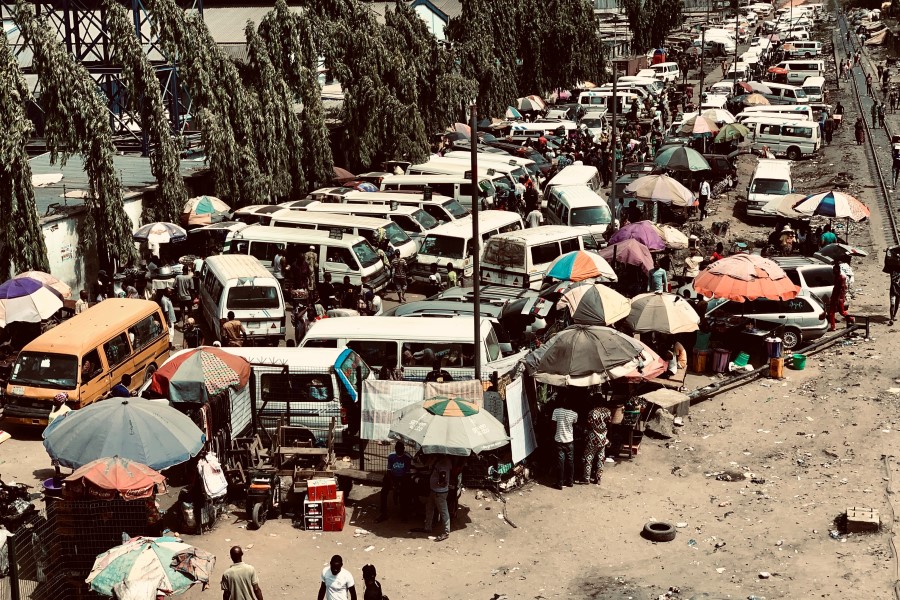Look at a list of the fastest growing economies in the world and one thing stands out – these are not the richest countries globally. In fact, almost all of the economies in the world that saw major growth in recent decades have been in the developing world. But why is this? Why are some of the poorest countries seeing such staggering economic growth, and, perhaps more importantly, why are their economies growing so much faster than richer countries?
1. Developing Countries Have Growing Populations
A first reason why the economies of developing countries grow so fast is because their populations are growing.
All of the ten fastest growing populations are in the developing world. Generally, families in poorer countries have more children, and as a result their populations expand rapidly. Population growth has always been a key reason for economic growth. Simply as there are more people, there are more people to be economically productive.
Many of the fastest growing developing economies of recent years, countries such as Burundi, where the population grew by over 3% in 2022, also saw significant population growth over recent decades. This means these countries have more people to produce and consume more goods. It also means they have more people to develop new ideas, start new businesses, and build connections both internationally and nationally. Therefore, the rapid expansion in many developing countries populations has resulted in fast economic growth.
Generally, population growth in the rich world has slowed. In fact, many developed countries will see their populations shrink in the coming decades. This is another factor in why, compared to richer countries, poorer nations have faster growing economies.
2. Many Developing Countries Have Very Young Populations
A second reason why developing countries economies grow so fast is because of their young populations.
Many developing countries have incredibly young populations. For example, the average age in South Sudan is 18, in Malawi its 16 and in Uganda its just 14. Compare this to Europe, where the average person is 44 years old. Young populations have been proven to contribute to faster economic growth and this is why many poorer countries economies are expanding.
There are several reasons why having a young population can result in a fast-growing economy. The younger a country’s population, the more people they have to be economically productive. Essentially, they simply have more people of working age.
Another reason why a young population can contribute to economic growth is because young people are often economically dynamic – more likely to start new businesses, take advantage of new technology and receive a more modern education.
The staggering difference in population age between the developed and developing world is a major reason why poorer countries post much faster economic growth.

3. Cheap Labor In Developing Countries Helps Economic Growth
The third reason why developing countries’ economies grow so fast is because of their cheap labour forces.
Wages in developing countries are low. For example, per capita income in Zambia is 3,300 USD, in Cambodia it’s 4,430 USD, and in Bolivia it is 8,800 USD. Compare this to France, where the per capita income is 51,850 USD. Low wages is one reason why people in developing countries are poor. However, it is also a key reason why their economies grow fast compared to richer nations. The cheap labor in developing countries encourages many international businesses to establish themselves there in order to reduce their overall running costs.
Over recent decades we have seen significant economic sectors from richer countries move to developing ones. Manufacturing, customer service and software development, for example, have all seen major companies’ set-up operations in poorer countries. One reason for this is to take advantage of cheaper labor. This has actually benefited many developing countries as it has provided more employment, better quality jobs and increased investment. As a result, their economies have grown.
The movement of many jobs from richer countries to developing ones in order for companies to take advantage of their cheaper labor is a key factor in why many poorer countries are seeing significant economic gains compared to richer ones.
4. Improved Infrastructure Helps Developing Economies Grow
Another reason why developing countries have such fast economic growth is because they reap the benefit of improved infrastructure.
The infrastructure –roads, railways, airports, utilities and tele-communication networks, in many developing countries is lacking. Either there is not the infrastructure needed for people to move, for goods to be transported or for information to be shared efficiently, or the infrastructure in-place is in poor condition and outdated. Infrastructure is vital to a high functioning economy.
However, although the infrastructure across the developing world is often in poor condition, many poorer countries have also invested heavily in improving their infrastructure in recent years. Across the developing world you’ll find new roads and railway lines, better airports and improved internet and phone service. A result of this investment has been major economic growth in developing countries.
…contrast this with many richer countries, where infrastructure investment is limited. Many developed nations have not invested enough in maintaining the infrastructure they have in recent decades. This has held back their economic growth and resulted in developing countries’ economies actually growing faster.
5. Developing Countries Are Receiving More International Investment
One reason why developing country economies grow faster is because they receive significant international investment.
As we’ve discussed, many businesses in richer countries are re-locating parts of their operations to developing nations to take advantage of lower costs. On top of this, many enterprises in the developed world are now investing heavily in poorer countries. Economic sectors such as resource extraction, textiles, manufacturing and customer service are seeing major investment in developing countries. This is one reason why their economies are growing so much.
Although developing countries still, generally, receive less investment than richer countries, because their economies have often been starved of investment, this increase has resulted in significant economic gains.
Investment is key for economies to grow. Many international investors see the growing economies of the developing world as places they can receive larger returns. As a result, investment has been flowing into developing economies, causing them to grow, sometimes incredibly fast.
6. Developing Countries Are Adopting New Technologies
A major reason why developing country economies are growing so fast is because they are benefiting from adopting new technologies.
Developing country economies have generally remained unindustrialized. Compare this to richer countries, many of which have benefited from over a century of industrialization. However, in recent decades, poorer countries have gained better access to technology. This is partly a result of technology becoming cheaper and more readily available. As developing countries have better access to technology, their economies have begun to grow… fast.
Technological adoption is key to making an economy grow. For productivity to rise, people need to use more advanced technologies. Automation also helps economies as expand as it means more people are able to create more goods and services, often to a higher quality. Developing countries recent adoption of technology and automation has resulted in major economic gains.
The rapid move from economies based mostly on agriculture and resource extraction, to manufacturing based economies, is one reason why many developing countries are seeing rapid economic growth.
7. Developing Countries Start From A Low Base
A final reason why developing countries have such fast growing economies is because they start from a low base.
There is an enormous wealth gap between the poorer and richer countries of the world. For example, the GDP of the United States is equal to the GDP of the 23 poorest nations combined. Developing country economies are significantly further behind those of developed nations.
One result of developing country economies being so far behind those of richer countries is that relatively small improvements to their economies can result in large gains. For example, building better infrastructure, improving education or healthcare, or liberalising laws around business and investment can also result in major economic improvements in developing countries. Richer nations are basically unable to see such gains as they have already implemented improvements in many of these areas.
Essentially, the low economic levels of many developing countries has meant that even minor improvements to their economies can result in major growth.


